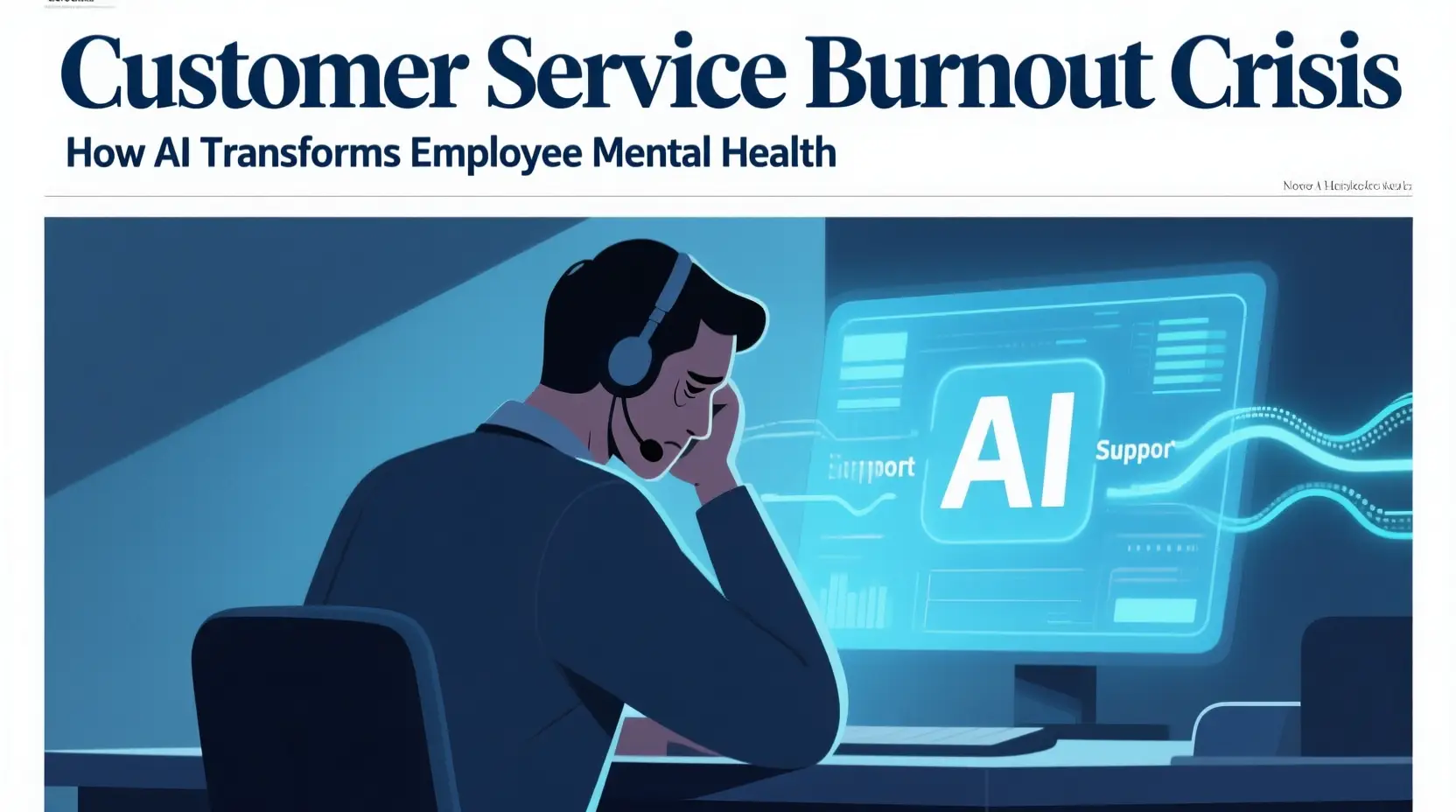73% of sales professionals are actively looking for new opportunities. Not passively browsing. Actively applying, interviewing, and planning their exits.
A recent discussion on r/sales asking “What’s the real reason you left your last sales org?” exploded with 115+ brutally honest responses. The thread reveals something every sales leader needs to understand: your best salespeople aren’t leaving for more money—they’re leaving because you’re making their jobs unnecessarily difficult.
The comments paint a consistent picture: talented sales professionals are walking away from organizations that saddle them with inefficient processes, outdated technology, and tools that create more work instead of enabling success. While leadership focuses on pipeline reviews and quota attainment, the infrastructure that determines whether reps can actually hit those numbers is quietly driving them out the door.
This isn’t just a retention problem. It’s a revenue problem disguised as an HR issue.
The Real Reasons Sales Teams Are Leaving (Straight from the Source)
The Reddit thread reveals patterns that should alarm every sales leader. When hundreds of sales professionals anonymously share why they left, certain themes emerge with startling consistency.
”The CRM System Was Built in 2003”
Technology friction topped the list of complaints. Reps described systems that required:
- 10+ clicks to update a single opportunity
- Manual data entry of information that should auto-populate
- Multiple platforms that don’t talk to each other
- Tools designed for management reporting, not rep productivity
One comment summarized it perfectly: “I was spending 3 hours a day on CRM busywork and 4 hours actually selling. My quota expected me to spend 8 hours selling.”
The math doesn’t work. When administrative overhead consumes 40% of selling time, quotas become unattainable not due to skill deficiencies but structural inefficiency.
”Nobody Could Answer Basic Questions Without a Week of Research”
Another dominant theme: the inability to provide customers with real-time information during buying conversations.
Sales reps described scenarios where prospects asked straightforward questions—pricing for custom configurations, availability for specific delivery dates, technical specifications for particular use cases—that required:
- Checking with multiple departments
- Waiting for email responses
- Scheduling follow-up calls days later
- Losing deals to competitors who could answer immediately
One rep wrote: “I’d be on a call, customer ready to buy, asks one technical question I don’t have the answer to. By the time I get back to them with the answer, they’ve already talked to three competitors who knew immediately.”
In modern sales cycles, speed determines winners. When your tools prevent reps from accessing information instantly, you’re not just frustrating employees—you’re systematically losing winnable deals.
”The ‘Sales Process’ Was Actually Just Bureaucracy Theater”
Multiple threads described elaborate sales processes that looked impressive in PowerPoint but collapsed in reality:
- 9-step approval processes for standard discounts
- Mandatory meetings with no decision-making authority
- Required documentation that nobody ever referenced
- Tools implemented to track activity rather than enable selling
The recurring sentiment: “Leadership confused ‘having a process’ with ‘having an effective process.’ We had tons of steps. None of them helped us close deals faster.”
Process for process’s sake destroys morale. When reps recognize that required activities don’t contribute to customer value or deal progression, they disengage—and eventually leave.
”I Was Supposed to Be in Five Tools Simultaneously During Customer Calls”
The technology stack nightmare appeared repeatedly:
- CRM for opportunity tracking
- Separate platform for product demonstrations
- Another tool for pricing and quoting
- Yet another for contract generation
- Plus email, calendar, and internal communication tools
Reps described frantically switching between screens during customer conversations, losing context, appearing unprofessional, and making preventable errors.
One comment: “I felt like an air traffic controller managing multiple systems instead of a sales professional building relationships and solving customer problems.”
Tool proliferation creates the illusion of capability while destroying actual effectiveness. Each additional platform adds switching costs, learning curves, and integration failures that compound into massive productivity loss.
Why These Problems Persist (Even Though Solutions Exist)
If these issues are so obvious to frontline reps, why do they persist in so many organizations?
Leadership Optimizes for Visibility, Not Velocity
Sales operations and leadership often prioritize their ability to track and report over reps’ ability to execute and close.
The pattern:
- Executive wants visibility into pipeline stages
- RevOps implements tracking system
- System requires reps to update multiple fields
- Updates take time away from selling
- Pipeline suffers from lack of activity
- Executive demands more tracking to understand why pipeline is weak
The spiral continues, with each solution creating the next problem.
Technology Decisions Are Made by People Who Don’t Use the Tools
The disconnect between technology purchasers and technology users creates predictable failures:
- VP evaluates platforms based on features impressive in demos
- Implementation focuses on management reporting capabilities
- Actual rep workflows weren’t considered during evaluation
- Reps inherit clunky tools they’d never have chosen
- Adoption suffers, ROI disappoints, blame shifts to “change resistance”
The fundamental error: assuming that tools which provide great executive dashboards automatically provide great rep experiences.
”Best Practices” Are Applied Without Understanding Context
Many organizations adopt “industry best practices” from companies operating in completely different contexts:
- Enterprise software sales processes applied to transactional ecommerce
- Complex qualification frameworks for simple purchase decisions
- Multi-touch nurture campaigns when customers want to buy immediately
One thread respondent wrote: “We sold a $200 product but had a qualification process designed for $200,000 enterprise deals. Prospects would literally say ‘I just want to buy it’ and we’d say ‘Great! First let me schedule a discovery call…’”
Best practices from the wrong context become worst practices in yours.
The Hidden Cost Nobody’s Calculating
While organizations track obvious costs—recruiter fees, training expenses, ramp time for replacements—they systematically underestimate the true impact of sales team turnover.
Revenue Loss During Transition
The timeline of turnover:
- Month 1: Rep gives notice, productivity drops as they disengage
- Month 2-3: Position open, quota unassigned or redistributed
- Month 4-5: New hire ramps, producing minimal revenue
- Month 6+: New hire reaches partial productivity
For a rep carrying $1M annual quota: six months of transition represents $500K in lost opportunity, plus the deals in their pipeline that die without continuity.
Institutional Knowledge Evaporation
When experienced reps leave, they take:
- Understanding of customer pain points and objections
- Knowledge of which messaging resonates with which segments
- Relationships with key accounts and buying influencers
- Workarounds for broken processes that kept deals moving
This knowledge isn’t documented because it exists in the gap between “official process” and “how work actually gets done.”
Cultural Deterioration
High turnover creates organizational anxiety:
- Remaining reps wonder if they should also leave
- New hires struggle without experienced mentors
- Team cohesion suffers from constant rotation
- Nobody invests in long-term improvements when tenure is measured in quarters
One comment captured it perfectly: “When I realized I was the most senior rep after only 14 months, I knew it was time to leave too.”
What Actually Retains Sales Talent (Evidence-Based Strategies)
The same Reddit thread that revealed why reps leave also showed what makes them stay. The patterns are clear—and often surprisingly simple to implement.
Give Reps Tools That Make Them More Effective, Not Just More Trackable
The reps who weren’t job-hunting described technology that:
- Automated repetitive tasks so they could focus on selling
- Provided instant answers to customer questions during conversations
- Integrated seamlessly so they weren’t switching between platforms
- Actually helped them close deals faster
Real example from the thread: “My current company gives me a tool that pulls competitive intel in real-time during calls. I can answer ‘how do you compare to [competitor]’ instantly instead of saying ‘let me get back to you.’ We close deals 30% faster than my old company. I’m never leaving.”
The insight: Reps don’t resist technology. They resist technology that creates work without creating value.
Optimize Processes for Customer Experience, Not Internal Reporting
The organizations people praised had processes designed around:
- “What does the customer need to make a confident decision?”
- “What’s the fastest path from interest to purchase?”
- “How can we remove friction from the buying journey?”
Rather than:
- “How do we ensure leadership has pipeline visibility?”
- “How do we maintain data cleanliness in the CRM?”
- “How do we enforce our methodology?”
The difference is subtle but profound. Customer-centric processes naturally generate the data leadership needs as a byproduct of effective selling. Process-centric approaches generate data at the expense of effective selling.
Enable Real-Time Responsiveness
Multiple comments praised organizations that empowered reps with:
- Immediate access to product information and pricing
- Authority to make standard decisions without approval chains
- Tools for live product demonstrations during conversations
- Ability to generate quotes and contracts in minutes, not days
One rep wrote: “At my new company, I can go from first call to signed contract in the same day if the customer is ready. My old company, that same deal would take 2-3 weeks minimum because of internal processes. Guess which company has better close rates?”
Speed is competitive advantage. Organizations that eliminate internal friction enable reps to match customer urgency rather than forcing customers to match bureaucratic timelines.
The Conversational Commerce Advantage: Technology That Actually Helps
The challenges described in the Reddit thread—inefficient processes, disconnected tools, inability to provide real-time information—are precisely the problems conversational commerce platforms solve.
What Changes With Live Shopping Technology
Traditional ecommerce sales model:
- Customer browses website alone
- Has questions, can’t get immediate answers
- Abandons to research elsewhere
- May or may not return
- If they do return, conversation starts over with different rep
Conversational commerce model:
- Customer browses website
- Connects instantly with sales expert via video or chat
- Gets real-time answers, product demonstrations, personalized recommendations
- Completes purchase in same session
- Relationship continues with same expert for future needs
For sales professionals, this means:
- No more “let me get back to you” delays that lose deals
- Instant access to product information during customer conversations
- Ability to demonstrate products visually, not just describe them
- Natural conversation flow without CRM busywork interrupting
- Higher conversion rates because you’re helping customers when they’re ready to buy
Why This Addresses the Core Retention Problems
Problem: “I spent more time in systems than with customers”
Solution: Conversational commerce platforms integrate customer interaction, product demonstration, and transaction completion in unified workflows. Reps engage customers naturally while the system captures relevant data automatically.
Problem: “I couldn’t answer customer questions in real-time”
Solution: Live shopping enables screen sharing, product visualization, and collaborative browsing. When customers ask technical questions, reps can show answers immediately rather than scheduling follow-ups.
Problem: “Our tools made me look unprofessional”
Solution: Polished video consultation interfaces and seamless product presentation capabilities make reps look expert and prepared, not disorganized and overwhelmed.
Problem: “I lost deals because competitors were faster”
Solution: Same-session conversion eliminates the window where prospects shop competitors. When you can go from initial interest to completed purchase in minutes instead of days, win rates transform.
The Data That Proves It Works
Organizations implementing conversational commerce consistently see:
- 28% conversion rates vs. 2% industry average for traditional ecommerce
- 57% increase in average order value through personalized recommendations
- 40% reduction in sales cycle length by eliminating artificial delays
- 60% lower customer acquisition cost due to higher conversion efficiency
- Dramatically improved rep satisfaction from actually being able to help customers effectively
One ecommerce company implementing live shopping reported: “Our rep retention improved from 14 months average tenure to 28+ months. When we asked why, reps said they finally had tools that let them do their jobs well instead of fighting systems all day.”
Implementing Change: A Practical Roadmap
Understanding the problem is worthless without actionable implementation guidance. Here’s how forward-thinking organizations are addressing sales team retention through technology modernization.
Phase 1: Audit Current Friction Points (Week 1-2)
Shadow your sales reps for full days. Don’t review metrics. Don’t attend pipeline calls. Actually watch them work.
Track:
- How many different tools they use during customer interactions
- How much time they spend on administrative tasks vs. customer engagement
- How often they have to say “let me get back to you” instead of answering immediately
- Where they manually enter data that should auto-populate
- Which required activities they consider valuable vs. bureaucratic waste
Most organizations discover that 40-50% of rep time is consumed by activities that don’t directly advance deals.
Phase 2: Prioritize Based on Impact and Effort (Week 3)
Map friction points across two dimensions:
- Impact on conversion rates and sales velocity
- Difficulty of implementation
Quick wins (high impact, low effort):
- Eliminating redundant data entry through better integrations
- Providing reps with real-time product information access
- Implementing conversational commerce for immediate customer engagement
- Streamlining approval processes for standard scenarios
Strategic investments (high impact, high effort):
- Consolidating fragmented tech stacks
- Redesigning sales processes around customer journey rather than internal reporting
- Training leadership to prioritize velocity over visibility
Phase 3: Pilot With Your Best Reps (Week 4-8)
Select 3-5 top performers who are vocal about current frustrations. Give them access to new tools and processes first.
Why this works:
- They’ll provide honest feedback on whether changes actually help
- If top performers improve further, you have proof of concept
- If top performers don’t see benefit, you learn before scaling
- They become advocates when changes work
Track both outcomes and sentiment: Deal velocity, conversion rates, time allocation—but also job satisfaction and likelihood to recommend the company to other sales professionals.
Phase 4: Scale Based on Results (Month 3+)
Roll out proven improvements systematically:
- Train remaining team on new capabilities
- Deprecate tools that new solutions replace (don’t just add more)
- Continuously gather feedback and iterate
- Celebrate wins publicly to reinforce that leadership is listening
What This Means for Ecommerce Sales Organizations
The insights from sales professionals across industries apply with particular force to ecommerce, where:
- Customer expectations for immediate information are highest
- Competition is literally one click away
- Technology should enable instant transactions but often creates barriers
- The gap between browsing and buying is where most revenue dies
The Ecommerce-Specific Challenges
Challenge: Customers research products across multiple sessions and devices
Traditional approach: Hope they return to your site, start conversation over each time
Conversational commerce approach: Persistent customer relationships where previous context is maintained, recommendations evolve based on browsing behavior, same expert can reengage across sessions
Challenge: Questions arise during research phase, not during scheduled calls
Traditional approach: Contact forms that get replies in 24+ hours, by which time customer has moved on
Conversational commerce approach: Instant connection with experts when questions arise, no waiting for business hours or appointment scheduling
Challenge: Demonstrating product value without physical interaction
Traditional approach: Static images, text descriptions, maybe video content—none of which answer specific customer questions
Conversational commerce approach: Live video demonstrations tailored to individual customer concerns, ability to show products from multiple angles, real-time answers to “what if” scenarios
Why This Is Urgent for Retention
Ecommerce sales professionals face unique pressures:
- 24/7 customer expectations vs. traditional work schedules
- Blame for conversion problems that are actually technology limitations
- Frustration of knowing customers are ready to buy but can’t get questions answered
- Watching competitors with better tools win deals
The organizations retaining ecommerce sales talent are those providing technology that enables reps to meet customer expectations instead of apologizing for system limitations.
The Bottom Line: Retention Is a Technology Problem
The Reddit thread reveals an uncomfortable truth: Sales team turnover isn’t primarily about compensation, culture, or career development. It’s about whether you give talented people the tools to succeed.
When sales professionals can:
- Engage customers in real-time without switching between six platforms
- Answer questions immediately instead of scheduling follow-up calls
- Demonstrate products effectively through live interaction
- Complete transactions efficiently without bureaucratic delays
- Spend time selling instead of fighting systems
They perform better, earn more, and stay longer.
The organizations hemorrhaging sales talent aren’t necessarily bad cultures or poor compensators. They’re organizations where:
- Leadership prioritizes tracking over enabling
- Technology decisions are made by people who don’t use the tools
- Processes are designed for internal convenience rather than customer experience
- Reps spend more time managing systems than engaging customers
The fix isn’t complicated. Implement technology that enables effective selling. Eliminate processes that exist for their own sake. Give reps the tools to be responsive when customers are ready to engage.
Conversational commerce platforms like Immerss solve precisely the problems driving sales team turnover: they enable real-time customer engagement, eliminate tool-switching friction, provide instant product information access, and convert browsers into buyers in minutes instead of weeks.
Your competition is already making these changes. The question isn’t whether conversational commerce becomes standard—it’s whether you implement before or after your best salespeople leave for organizations that already have.
Ready to see how conversational commerce can transform your sales effectiveness and retention? Book Your Live Demo to discover how leading ecommerce companies are reducing sales team turnover while dramatically improving conversion rates.



